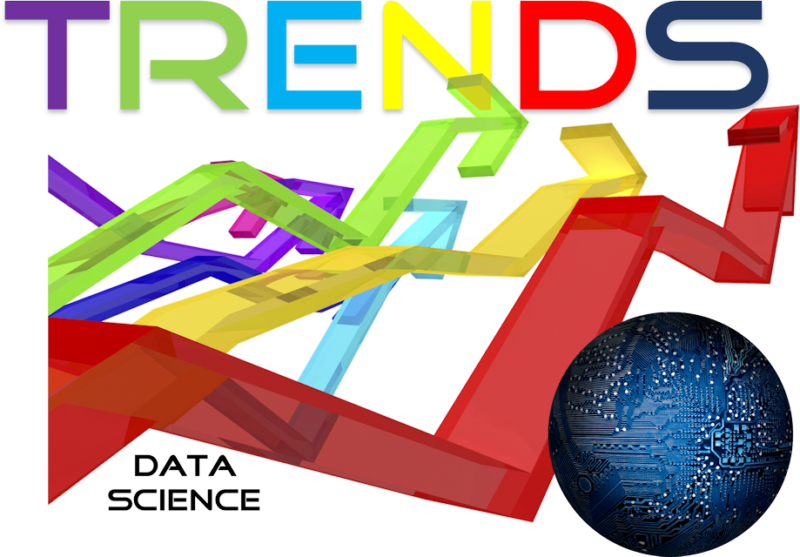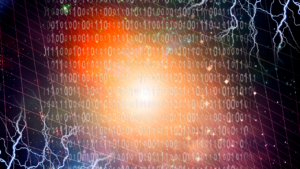In a previous post about big data trends, I stressed that data is only valuable when analyzed.[1] Tech writer Sumana Bhattacharya notes, “Data science is defined as the ability to make data intelligible and processable to extract quality from it.”[2] Personally, I would have used “value” in place of “quality”; nevertheless, you get the point. Business consultant and futurist Bernard Marr (@BernardMarr) writes, “If data is the oil of the information age and machine learning is the engine, then data science is the digital domain’s equivalent of the laws of physics that cause combustion to occur and pistons to move.”[3] Arti Chaudhary, a journalist and content analyst, adds, “Big data analytics is one of the powerful technology trends and is reshaping numerous business processes and operations all throughout the world. As the amounts of data continue to grow, organizations are looking for new innovative ways to optimize big data. Big data is also being used with artificial intelligence (AI), machine learning (ML), and other innovative processing technologies to analyze, process, and parse the massive datasets in multiple sectors like healthcare, E-Commerce, Government data, public infrastructure, banking and FinTech, security, manufacturing, natural resources management, and more.”[4]
Data Science Trends
Democratization of Data Science. Most business consultants insist companies need to transform into digital enterprises. In a data-driven enterprise, data democratization means data and analytics must be available to all decision-makers in an organization. As journalist and data scientist Daniel D. Gutierrez (@AMULETAnalytics) notes, “Every company wants to become a data company or at least a data-driven company. This naturally will lead to the rise of self-service analytics.”[5] Marr believes “automated machine learning” (aka autoML) will help achieve that goal. He notes, autoML is an exciting trend that’s driving the ‘democratization’ of data science.” He goes on to explain, “Developers of autoML solutions aim to create tools and platforms that can be used by anyone to create their own ML apps. … Quite often, a large portion of a data scientist’s time will be taken up with data cleansing and preparation — tasks that require data skills and are often repetitive and mundane. AutoML at its most basic involves automating those tasks, but it increasingly also means building models and creating algorithms and neural networks. The aim is that very soon, anyone with a problem they need to solve, or an idea they want to test, will be able to apply machine learning through simple, user-friendly interfaces that keep the inner workings of ML out of sight, leaving them free to concentrate on their solutions. 2022 is likely to see us take a big step closer to this being an everyday reality.”
Improved DataOps. P. C. Kiran (@pckirank), Vice President of engineering for Gathr, predicts, “To improve data quality and reduce time to insight, enterprises will increasingly embrace DataOps practices across the data life cycle in 2022.”[6] He elaborates, “DataOps helps build and deliver trusted, consumption-ready data pipelines to analytics teams across the enterprise. … There is a pressing need to automate data flows and monitor all data pipelines and processes through a single dashboard. In 2022, DataOps will move from being an abstract concept to an on-the-ground reality. Businesses will proactively integrate DataOps methodologies with their pipelines to drive agility and unlock business value faster. Tools that support DataOps will gain popularity, especially low-code/no-code platforms that help model use cases and deliver business-ready data.”
Convergence of Data Science and Decision Science. Marr observes that numerous technologies are converging and the results are likely to be spectacular. He writes, “AI, the internet of things, cloud computing, and superfast networks like 5G are the cornerstones of digital transformation, and data is the fuel they all burn to create results. All of these technologies exist separately, but combined; they enable each other to do much more.” With the democratization of data and the convergence of technologies, we are also seeing a convergence of data science and decision science. Kiran adds, “In 2022 we’ll see rapid evolution of edge analytics powered by the growth of 5G network infrastructure worldwide. Computation and data storage will move closer to where data is generated, and communication between edge devices will occur at lightning speed. This, in turn, will help enterprises enable collaborative analytics for real-time decision making.” At Enterra Solutions®, we are advancing Autonomous Decision Science™ (ADS), which we believe is the next step in decision science. The staff at Corsair’s Publishing offers this succinct description about the differences between data science and decision science. They write, “Data science is for optimization and refinement. It is built on big numbers and big data. Decision science is for decision-making and hypothesis development. It is built on logic and probability.” With the advent of Autonomous Decision Science, we are seeing these two fields converge. Gartner analysts call this convergence “decision intelligence.” They explain, “Decision intelligence is a practical approach to improve organizational decision making. It models each decision as a set of processes, using intelligence and analytics to inform, learn from and refine decisions. Decision intelligence can support and enhance human decision making and, potentially, automate it through the use of augmented analytics, simulations and AI.”[7]
Concluding Thoughts
As I noted at the beginning of this article, discussing data separate from the technologies used to analyze that data is a bit of a fool’s errand. Data and analysis are inextricably tied together. Journalist Sayantani Sanyal concludes, “Digital transformation is a global phenomenon that is driving a technological revolution all over the world. … Digital transformation goes hand in hand with big data, AI, machine learning, and the Internet of Things. Machine learning and AI tools will continue to handle the data generated from the data analytics to operate systems, make sense of complex hidden relationships, and store and project insights beyond human understanding.”[8] Data science is all about making sense of the complex world in which we live. Decision science uses that understanding to improve decision-making.
Footnotes
[1] Stephen DeAngelis, “Trends 2022: Big Data,” Enterra Insights, 1 February 2022.
[2] Sumana Bhattacharya, “Top Big Data Trends for Data Scientists,” Analytics Insight, 11 August 2021.
[3] Bernard Marr, “The 5 Biggest Data Science Trends in 2022,” Forbes, 4 October 2021.
[4] Arti Chaudhary, “Top 10 Big Data Trends Will Drive the Digital World in 2022,” Analytics Insight, 22 December 2021.
[5] Daniel D. Gutierrez, “Big Data Industry Predictions for 2022,” insideBIGDATA, 15 December 2021.
[6] P. C. Kiran, “These 3 Trends Will Shape the Data and Analytics Landscape in 2022,” Transforming Data With Intelligence, 13 December 2021.
[7] Staff, “Gartner Top Strategic Technology Trends for 2022,” Gartner, 2021.
[8] Sayantani Sanyal, “The Evolution of Big Data Analytics in 2022: Top 10 Hidden Trends,” Analytics Insight, 13 December 2021.





